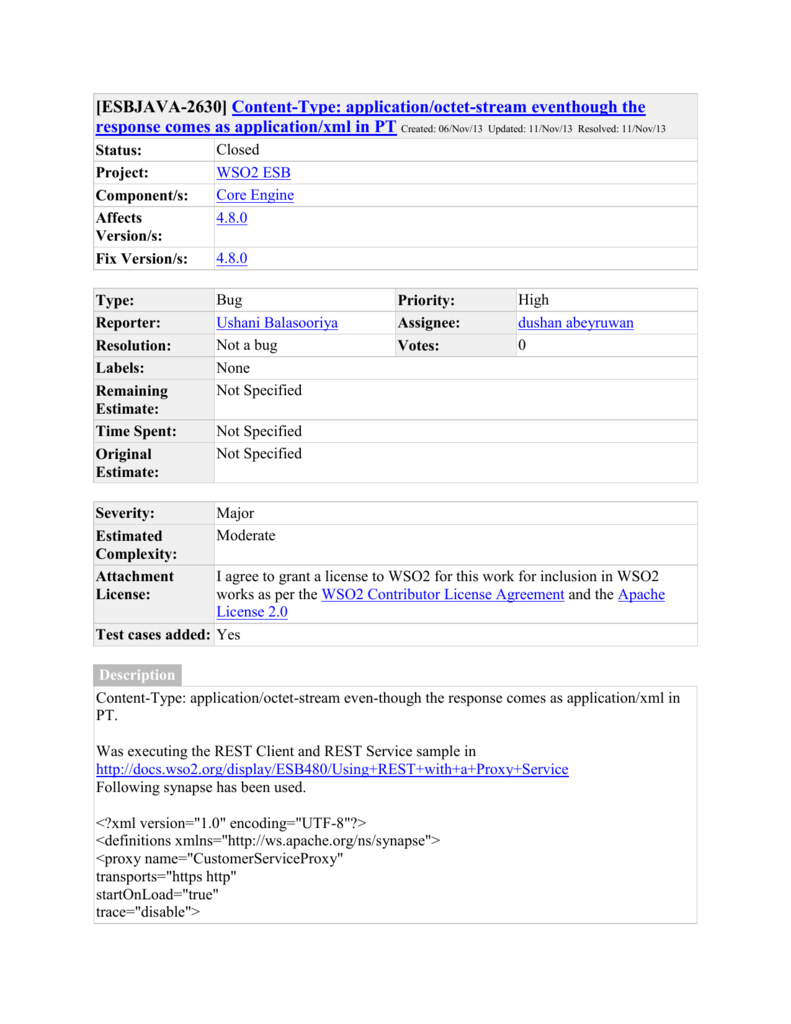Octet Stream Encoding
Message Encoders are an interesting component within WCF channel stack. It’s primary job is to transform Message instances to and from the wire. While it has an independent existence within a WCF binding stack in the form of a Message Encoding binding element, in essence it is closely integrated with the underlying transport layer. It can transform incoming binary files into base64 encoded strings before passing. Various image content types, application/pdf and application/octet-stream.
9 years ago User-Agent: Mozilla/5.0 (Windows; U; Windows NT 5.1; en-US; rv:1.9.1.6) Gecko/20091201 Firefox/3.5.6 Build Identifier: Gecko/20100107 Lanikai/3.1a1pre Attachments show as a raw MIME after a rectangular divider following the message body. Thunderbird 'Gecko/20091204 Thunderbird/3.0' does not exhibit the same behavior, i.e. Attachments are processed properly.
Octet Stream Encoding Definition
Reproducible: Always Steps to Reproduce: 1. Open the message with an attachment defined as 'Content-Disposition: inline.' Observe that attachment cannot be accessed 3. Actual Results: Attachments cannot be accessed. Expected Results: Attachments should be accessible.
Meet Base64 Decode and Encode, a simple online tool that does exactly what it says; decodes Base64 encoding and encodes into it quickly and easily. Base64 encode your data in a hassle-free way, or decode it into human-readable format. Base64 encoding schemes are commonly used when there is a need to encode binary data that needs be stored and transferred over media that are designed to deal with textual data. This is to ensure that the data remains intact without modification during transport. Base64 is used commonly in a number of applications including email via MIME, and storing complex data in XML. Easy to use Begin with the 'type (or paste) here.' Area to enter your data, then hit the 'encode' or 'decode' buttons respectively.
After a blink of any eye, the results will be shown below these buttons. Alternatively, use the 'click (or tap) here.' Area to select a file from your device, then hit the corresponding button. Once the upload and processing completes, you will be notified to download the resulting decoded/encoded file. Completely free Our tool is free to use.
From now you don't have to download any software for such tasks. Safe and secure All communications with our servers are made through secure SSL encrypted connections (https). Uploaded files are deleted from our servers immediately after the decode or encode process, and the resulting downloadable file is deleted right after the first download attempt, or 15 minutes of inactivity. We do not keep or inspect the contents of the entered data or uploaded files in any way. Read our privacy policy below for more details. Details of the Base64 encoding Base64 is a generic term for a number of similar encoding schemes that encode binary data by treating it numerically and translating it into a base 64 representation.
The Base64 term originates from a specific MIME content transfer encoding. Design The particular choice of characters to make up the 64 characters required for base varies between implementations. The general rule is to choose a set of 64 characters that is both part of a subset common to most encodings, and also printable. This combination leaves the data unlikely to be modified in transit through systems, such as email, which were traditionally not 8-bit clean. For example, MIME's Base64 implementation uses A-Z, a-z, and 0-9 for the first 62 values. Other variations, usually derived from Base64, share this property but differ in the symbols chosen for the last two values; an example is UTF-7. Example A quote snippet from Thomas Hobbes's Leviathan: ' Man is distinguished, not only by his reason, but.'

Represented as an ASCII byte sequence is encoded in MIME's Base64 scheme as follows: TWFuIGlzIGRpc3Rpbmd1aXNoZWQsIG5vdCBvbmx5IGJ5IGhpcyByZWFzb24sIGJ1dCAuLi4= In the above quote the encoded value of Man is TWFu. Encoded in ASCII, M, a, n are stored as the bytes 77, 97, 110, which are 01001101, 01100001, 01101110 in base 2. Full movie step up 3. These three bytes are joined together in a 24 bit buffer producing 1110. Packs of 6 bits (6 bits have a maximum of 64 different binary values) are converted into 4 numbers (24 = 4. 6 bits) which are then converted to their corresponding values in Base64. Text content M a n ASCII 77 97 110 Bit pattern 0 1 0 0 1 1 0 1 0 1 1 0 0 0 0 1 0 1 1 0 1 1 1 0 Index 19 22 5 46 Base64-encoded T W F u As this example illustrates, Base64 encoding converts 3 uncoded bytes (in this case, ASCII characters) into 4 encoded ASCII characters.